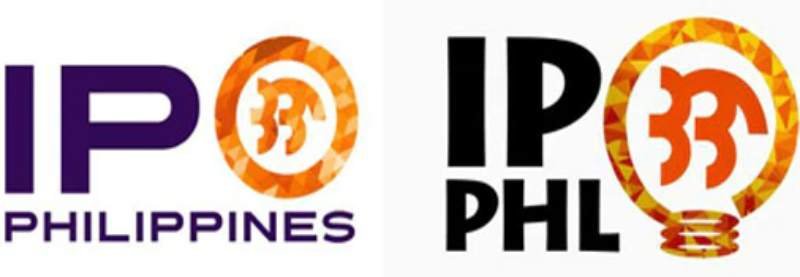
Challenges Confronting SMEs in the Philippines
Table of Contents
Navigating the Complex Landscape: Challenges Confronting SMEs in the Philippines
SMEs, recognized as the lifeblood of economies worldwide, hold a special place in the Philippine economic landscape. These adaptable and resilient businesses are instrumental in job creation, fostering innovation, and sustaining economic growth. Despite their substantial potential, SMEs often grapple with a complex web of obstacles that can hinder their growth and overall success.
This article will explore the most common challenges that Small and Medium-sized Enterprises (SMEs) encounter in the Philippines. Don’t forget to tell us your thoughts, and drop your opinions in the comment section below.

Most Common Challenges Confronting SMEs in the Philippines
1. Limited Access to Financing: Procuring sufficient financing ranks among the top hurdles for SMEs. Lenders’ strict prerequisites and risk aversion can create a financing gap. For instance, an SME aiming for substantial growth through market expansion or product diversification often requires significant capital infusion.
2. Technological Divergence: The relentless march of technology can leave SMEs grappling to keep pace. Adopting modern technologies, vital for competitiveness and efficiency, is often hampered by the initial financial investment required. Whether it’s adopting automated systems or integrating e-commerce platforms, substantial funding might be a prerequisite for progress.

Challenges Confronting SMEs in the Philippines
3. Navigating Regulatory Mazes: Complex, often inconsistent regulations pose a significant challenge for SMEs. The arduous process of ensuring compliance can drain valuable time and resources, casting a shadow over their entrepreneurial spirit. This regulatory labyrinth can manifest across sectors and geographies.
4. Infrastructure Bottlenecks: Lackluster infrastructure, encompassing transportation, utilities, and digital connectivity, creates roadblocks for SME growth. The inability to access reliable transportation networks or high-speed internet can impede the market reach of businesses, regardless of their scale.

Challenges Confronting SMEs in the Philippines
5. Tapping into Expansive Markets: SMEs often grapple with broadening their domestic and international market horizons. The lack of distribution networks, resources, and pertinent information hampers expansion. This can be seen when SMEs strive to participate in international exhibitions, a venture requiring considerable investment.
6. Skills Shortage Woes: The search for qualified and skilled personnel can be an uphill battle for SMEs, particularly in specialized industries. Scarce talent can stunt productivity and growth prospects, presenting problems for businesses aiming to remain competitive.

Challenges Confronting SMEs in the Philippines
7. Clash with the Informal Sector | Underground: The informal sector’s flexible structure and reduced costs can pose a formidable challenge for formal SMEs. The ability of informal operators to offer products or services at lower prices can sway customers, impacting the market share of established businesses.
8. Risk Management Quandaries: SMEs often lack the resources to establish comprehensive risk management strategies, rendering them susceptible to economic shifts and unexpected shocks. The case is magnified during crises, such as the recent COVID-19 pandemic, when financial institutions’ stringent loan requirements might not be conducive to SME recovery.

Challenges Confronting SMEs in the Philippines
9. Innovation Stifling: A lack of resources, expertise, and a culture of innovation can hinder the quest to introduce novel products or services. Even when SMEs harbor groundbreaking ideas, the path to bringing these concepts to life is fraught with challenges, often requiring substantial capital input.
10. The Scaling Struggle: Ascending from a small-scale operation to a larger one presents various challenges, from limited access to capital to operational and managerial complexities. The transition requires a delicate balance of resource allocation and strategic planning.

Challenges Confronting SMEs in the Philippines
11. Fumbling for Information: Inadequate access to accurate market data, industry trends, and relevant business information can stifle informed decision-making. The lack of actionable insights can obscure a clear growth trajectory.
12. Escalating Operational Costs: The escalation of costs, encompassing raw materials, utilities, and labor, can impede SME profitability. The burden of taxes and wage bills can strain these businesses financially, making it challenging to maintain healthy margins.

Challenges Confronting SMEs in the Philippines
13. Training and Education Gaps: A deficiency in training programs and resources for skill development curtails the professional advancement of SME proprietors and employees alike. Bridging this gap can enhance overall business competence and contribute to sustainable growth.
14. Navigating Bureaucratic Tangles: Cumbersome bureaucratic processes, spanning business registration, licensing, and permit acquisition, can stymie SME operations and growth prospects. The energy expended on red tape can divert resources from core business activities.

Challenges Confronting SMEs in the Philippines
15. Intellectual Property Predicaments: Inadequate intellectual property protection can discourage innovation among SMEs, undermining their ability to safeguard their creations and ideas. This issue becomes prominent when SMEs face challenges protecting their unique products, services, or designs.
In conclusion, the challenges confronting SMEs in the Philippines are multifaceted and pervasive. As these businesses continue to form the bedrock of the nation’s economic landscape, it is imperative to address these issues holistically. Collaborative efforts from governmental bodies, financial institutions, and the private sector are required to create an environment conducive to the growth and prosperity of SMEs. The Philippines can empower its SMEs to surmount obstacles and flourish in an ever-evolving global marketplace through targeted interventions.

Challenges Confronting SMEs in the Philippines
More Stories
- Your YES Matters: JVA Proxy Voting Revolutionizes Participation
- Reasons to Vote YES for JVA | CENECO Joint Venture Agreement with Primelectric/Negros Power
- Design Thinking Process | Case of Jojo Vito Designs Gallery
- Digital Marketing Evolution: The Case of Jojo Vito Designs Gallery
- Ornamental Plants: Cultivating a Haven of Well-Being and Tranquility
- Himamaylan Stress Management Seminar
- Service Problems of CENECO: A Call for Change and Progress
- Landers Superstore Bacolod | Biggest in the Philippines
- GREEN ENERGY: MORE Power’s Model, Hope for Negros
- Repurposing Your Old Clothes: From Old to Gold
- Power Watch Negros Advocates for Transparent Bill Deposits
- VIETNAMESE FOOD | EXCITING DISHES TO TRY
- THINGS TO DO IN PATTAYA, THAILAND
- YOGYAKARTA, INDONESIA | INTERESTING PLACES TO VISIT
- LIST OF POPULAR FILIPINO FOOD / DISHES
- BACOLOD TOURIST SPOTS | THINGS TO DO + NEGROS OCCIDENTAL
- BEST HOME ACNE REMEDIES
- VIGAN TOURIST SPOTS | THINGS TO DO
- 25 THINGS TO DO IN CAMBODIA | TOURIST SPOTS
- KUALA LUMPUR TOURIST SPOTS
- DAVAO TOURIST SPOTS | THINGS TO DO
- ILOCOS NORTE TOURIST SPOTS | THINGS TO DO
- Challenges Confronting SMEs in the Philippines











Limited Access to Financing:
Small enterprises can seek additional funding from the government through the GoNegosyo Programs of DTI for example. They can also apply for loans from banks and choose loans that have low interest rates in order for them to have ample time in
Skills Shortage Woes:
Small businesses can look for qualified employees by looking into government programs that supports and coordinates with hiring and skills development programs in order for them to be able to find competent applicants. Another solution would be the use of internet sites and social media wherein Small businesses can advertise job openings and through these sites, they can vet applicants
Fumbling for Information:
Since many small businesses do not have the money to ghore think tanks for information, the best and most efficient way for them to be able to get information and be updated when it comes to their business and the business environment is through social media and the internet, by being able to efficiently utilize these tools, they will be able to maximize their trove of information that would keep them updated and would be able to make them adjust accordingly.
Escalating Operational Costs:
– one of the many solutions that a small business can do to maintain a steady stream of income instead of surmounting expenses is by cutting down on products or services that are not liquid or “bakal” since the operational costs that go into is a already a large chunk of your capital.
Training and Education Gaps:
Small businesses can ask for help from the government for assistance in training, the government has many programs and schools that can hone the people’s skills such as TESDA and various programs under DTI. The various courses offered by these schools and educational centers will be able to make their students more competent.
Limited access to financing
The most challenging barrier to SME development is a lack of financing. Due to their poor track records, limited acceptable collateral, and insufficient financial statements and business plans, many SMEs are unable to access available funding.
To increase SMEs’ access to financing, it’s critical to address the risky profile of these businesses, which is a result of their lack of track record, informational imbalances, asset and collateral shortages, and lack of management competence. Thus, it would be beneficial to establish a system that would enhance the availability of credit generally, especially for MSMEs. This would also help to decrease the overreliance on collateral to get credit facilities and to provide measures that would make credit cheaper.
DO NOT READ! JUST INFORMATION (The Credit Information Corporation (CIC) is a government-owned and controlled corporation providing credit information system in the Philippines. The credit information system is intended to straightforwardly address the need for dependable credit information of borrowers and is supposed to significantly improve the overall availability of credit especially to micro, small and medium-scale enterprises; to make credit more cost-effective; and to reduce the dependence on collateral to secure credit facilities.)
Technological divergence
One of the most important things that can help Philippine SMEs establish a solid market presence is the adoption of technology. In addition to supporting vital downstream activities like marketing and distribution, technology has proved essential for SMEs in increasing organizational performance and productivity. However, due to lingering financial issues following the crisis and the need to retrain employees, some SMEs could find it difficult to introduce digital initiatives.
Government-funded technology extension initiatives should be put in place to increase the absorption and adaptation of current technologies in order to assist SMEs. Technology extension initiatives usually begin with an evaluation of the company’s operations and procedures, which is followed by a suggested improvement plan and help with execution. Important services include benchmarking to find areas for improvement, training, technical support and consulting, trends and best practices, and information provision to maximize the use of currently available technologies.
Skills shortage woes
Another area where SMEs suffer is losing skilled workforce to competitors, especially the bigger ones in the same industries. To address this problem, employers should invest in employee training. The necessity for organizations to invest in reskilling and upskilling their staff to adapt to changing workplace demands and minimize the difficulties associated with acquiring new talent is becoming more and more evident. It is now more crucial than ever for small businesses to prioritize thinking big when it comes to employee training, from internal programs and online training courses to mentorships and apprenticeships.
Another is to encourage flexibility and incentives. Most workers would like to have a better salary, but you should never undervalue the benefits of working for a company that values its employees. Offering complimentary food during a shift, staff discounts, or opportunities for professional development can be innovative and economical ways to convert a prospective employee into a real one.
Fumbling for information
Information on preferences, needs, and spending is not easily accessible to SMEs. Also, the potential customer’s ability and willingness to pay in their intended markets.
To increase the size of their market, SMEs need to pinpoint the areas where their product is in demand. An SME that intends to export, for example, needs to ensure that its products meet consumer preferences and tastes in addition to adhering to national and international quality standards and regulations. It also must determine whether consumers’ personal income levels are sufficient for them to purchase the goods.
Escalating operational costs
Increasing costs and declining income are two of the main problems SMEs encounter. A few of these are low demand for goods and services, insurance costs, inflation, raw material costs, and other typical business expenses.
All SMEs need to do to solve the issue is compare prices. If your supplier’s raw material costs are too high for you to increase the price of your products, find another supplier and compare prices without affecting quality and regularly switch suppliers.
Additionally, you need to make sure that you are not overspending on unnecessary costs. Sometimes you should stop and consider whether an expense is really necessary before releasing funds for it. If it is, you should also ask if there is a better way that won’t cost as much.
1.Limited Access to Financing:
Solution: Limited access to financing can be considered as one of the most difficult and major problems for SMEs in the Philippines. However, there are programs and initiatives made by government agencies that can address this problem.One program that can help MSMEs address their limited access to financing is the Pondo sa Pagbabago at Pag–aasenso (P3 Program). This loan program is being initiated by the Department of Trade and Industry(DTI) which aims to provide financial assistance to MSMEs. The reason as to why this program can be a solution is that it addresses the problem of limited access to financing with a minimal percentage of interest.
2. Skills Shortage Woes
Solution: In order to address this problem, initiatives and programs are made available by the Technical Education and Skills Development Authority (TESDA). TESDA is an agency which aims to help Filipinos be equipped with technical skills that will enable them in finding employment locally or outside the country.TESDA can be a way to help MSMEs by having a partnership and coordinate with each other in order for the MSMEs to employ individuals who are skilled. The reason as to why this is my solution is that TESDA can address the skill shortage woes that MSMEs encounter due to Tesda graduate’s skills and abilities that can be backed up through certifications.
3. Intellectual Property Predicaments
Solution: The Intellectual Property Office of the Philippines (IPOPHL) is a government agency that is in charge of administering the intellectual property rights such as trademarks, patents, copyrights and many more. This government agency under DTI can help MSMEs in facing intellectual property predicaments by being accessible for MSMEs to avail for their services and programs, IPOPHL conducts seminars and provides services such as application for intellectual properties. The reason as to why I recommended the IPOPHL for MSMEs is because they are the right agency to help you in dealing with these predicaments and can help secure your ideas, products, services and designs.
4. Training and Education Gaps:
Solution: I suggest that MSMEs should avail the services of Go Negosyo in terms of training and education. In order to address the training and education gaps, capacity building programs such as the Kapatid Mentor Me Program where entrepreneurs can learn from mentors and experts in order to gain insights and knowledge in growing or maintaining their business. The reason as to why I suggested the KMME program is that this program offers guidance, education and support in MSMEs in order for them to be trained and educated in order for their businesses to flourish in the long run.
5.Fumbling for Information
Solution: In order to address this problem, I suggest to let entrepreneurs form MSME to be able to join the GO Negosyo Program called the 3M( Mentorship, Money, and Market) on wheels program. This program aims to give guidance and financial assistance to MSMEs. The reason why this program can address the problem of fumbling for information is that entrepreneurs can gain access such as industry trends, and relevant business information with the help of the mentors from Go Negosyo.
Problem 1: Limited Access to Financing
Entrepreneurs having financial constraints can seek assistance in the Department of Trade and Industry. One of the initiatives offered by the Go Negosyo Act is to provide entrepreneurs with access to financing and credit facilities. This includes financial cooperatives, banks, and loans for them to acquire their facilities and machineries needed for their business.
Problem 2: Technological Divergence
Technological adaptation is crucial for enterprises to adapt in today’s ever-changing world. With the use of social media, entrepreneurs can market their products on a larger scale and potentially reach possible investors/customers. A great example for enterprises to establish their online presence is through e-commerce. By creating a website and display their products/services offered, this can help them promote and reach a wider audience.
Problem 3: Skills Shortage Woes
The Kapatid Agri Mentor Me Program (KAMMP), with its mission “to equip them [agribusiness owners] with the entrepreneurial mindset and practical knowledge needed for expansion,” it allows agripreneurs to navigate obstacles, take opportunities, and build thriving enterprises that contribute to the agricultural sector and economic development of the country. Through their gained knowledge and skills in this program, these agripreneurs can educate/train their farmers with the right techniques towards sustainable farming practices.
Problem 4: Training and Education Gaps
To further improve the overall operations of an entrepreneur’s business, the Kapatid Mentor Me (KMME) Program is a great opportunity for business owners to be coached by industry experts and/or seasoned entrepreneurs. The KMME program empowers entrepreneurs with the knowledge, skills, and connections needed to navigate the competitive business landscape. Through mentorship, they are guided and trained in various aspects of business management—marketing, operations, financial management, and strategic planning to improve their overall business acumen.
Problem 5: Escalating Operational Costs
Running a business costs a fortune, thus it adds financial burden, especially for those aspiring and small business owners. To help the entrepreneurs ease their operating expenses, the Republic Act No. 9187 or also known as the Barangay Micro Business Enterprises (BMBE) Act of 2002, can be availed as it grants benefits and incentives such as the income tax exemption and exemption from the coverage of the minimum wage law. This is only applicable for businesses having a start up capital of Php 3,000,000.00 and below.
Submitted by: Andrea Elizabeth Sotto | BSEN4-A; ENTRP111
1. Limited Access to Financing
– For my own understanding here we could see that those people who are in SME’s are always struggeling to find was to futher improve and be competative to the market but dosent have the cappacity to further improve their business because they are lack of financial support or dont have the money to there improve and be competative into their own market.
2. Skills Shortage Woes
– Here we could see SME’s owners are always struggeling to find good works in order to keep up with the demand of their business and also they can improve their business by expanding it into a competative way.
3. Risk Managment Quandaries
– Effective risk management demands eliminating situations that put your organization at unnecessary, increased risk. A very good example of these is during the pandemic because all of us did not expect that this will happen especially if you are facing a finacial break down and struggeling to sell it to the market.
4. Navigating Bureaucratic Tangles
– Involving complicated rules and procedures which can cause long delays. In these situation SME’s owners are always struggeling on how their business can already fuction because of the primites that are required by the government but still the relising are long.
5. Training and Education Gaps
– In here business are expected to do the things that make there business even better that is why their is these training programs that are government are doing in order to help them, but the question is they are doing it or they are doing it but in a different way that is the real meaning why other companys especially SME’s other owners have their own ways in running their business.
1. Technological Divergence
The DTI can check for businesses that are still outdated when it comes to certain technological aspects. One of the most important things right now is the public’s transition into online payments. It allows for the consumer to easily track their expenses and avoid the loss of cash in an environment that is prone to theft. They should reach out and teach businesses to offer these types of payments to further provide accessibility and increase technological advancements in terms of payments.
2. Infrastructure Bottlenecks
I think it’s important for government agencies to partner up in this scenario, this includes partnering up with private organizations such as business owners. A lot of land right now still remains undeveloped or although developed, not developed well, in various areas throughout the city. Government agencies can tap into the business owners of these lands and offer them partnerships with developers that can create spaces for entrepreneurs to establish their businesses. This can better the economy and allow for more aspiring business owners to expand their business in areas that are as of now, stagnant.
3. Skills Shortage Woes
The International Labor Organization can increase the number of programs yearly. Although it and the DTI currently have a good amount of programs, here is more needed to increase labor productivity and skills. As some business owners and laborers are not aware of this opportunity unless presented, they could slowly check with companies and tap into some areas to offer them training programs. Efficiency is key in every business so this is crucial to the development of the business sector in all parts of the country.
4. Risk Management Quandaries
A suggestion could be along the lines of having Risk Armor Initiatives for businesses. This project will help SMEs navigate through financial issues, inevitable in any business, and make sure that they can come out stronger with every problem. The DTI or any other business-involved agencies can present ideas to owners who are unaware of such projects and give them suggestions that can help within the realm of their reach. Specifically, it can be the form of online workshops, webinars, in-company talks.
5. Fumbling for Information
A one-stop shop for entrepreneurs can be a viable idea to solve this problem. The DTI can create a market intel boost. This will set up a team that will keep a lookout for trends and consistencies in the market and regularly release such information on webpages and social media platforms to reach a wider audience. It can also work with tech developers to create localized apps and tools that can allow entrepreneurs to navigate the market easily through an endless scope of tips and information
1.Skills Shortage Woes
In order to improve the skills of the employees or personnel, the company must first identify the skills required for each role within the organization and know their skills to pinpoint the gaps that need to work on to become better. There are programs that offer a variety of training methods, including workshops, online courses, and on-the-job training for them to choose a training path that align with their employees interests and job responsibilities. Go Negosyo’s program like Kapatid Mentor Me(KMM) who provide a program for the specific need of training for the company that wants to help the employees’ skills to improve and do their job efficiently.
2.Escalating Operational Costs
Operational costs can be one of the challenges especially for small and medium start up businesses, it is crucial to take strategic plans to manage and reduce the costs. It is important to Regularly monitor and reassess the cost-saving initiatives to ensure ongoing effectiveness. DTI has a program which can help entrepreneurs increase their knowledge and can help them grow in highly competitive environment through one the DTI’s Go Negosyo program that can help for financing their business needs, training them to get credit track record and experience, and building up business size necessary to access bank financing in the future.
3. Technological Divergence
Technology divergence is one of the problems that arises from the fact that, as technology advances, various technical systems and lack of knowledge occasionally hinder toward accomplishing the company’s goals. Companies are finding it difficult to secure the funding they need to stay in operation. The Shared Service Facilities (SSF) Project is one of the programs identified under the Plan. The Department of Trade and Industry project aims to improve SME productivity and efficiency through better access to technology. SMEs are suggested to look into government programs that offer grants or subsidies for technology adoption.
4.The Scaling Struggle
SMEs often have limited financial resources and manpower. One of the challenges is limited access to capital for expansion of the business. Suggestions for overcoming scaling struggles is to develop a clear and realistic scaling strategy. Programs like Rise Up Program can contribute programs that offer financial support, including grants, loans, or investment opportunities, to help SMEs secure the capital needed for expansion. Mentorship programs can also connect SMEs with experienced business leaders who provide guidance, advice, and insights to navigate the challenges of scaling.
5.Training and Education Gaps
SME owners and employees may lack access to formal education and training programs. Because of limited resources and time constraint it is challenging to pursue formal education avenues. Addressing the training and education gap requires a multi-faceted approach, including targeted training programs, access to resources, and a supportive business ecosystem. Government initiatives, industry collaborations, and the development of tailored educational resources can play crucial roles in overcoming these challenges. KMME program can connect SME with experienced mentors and industry experts who provide guidance based on their practical knowledge and expertise. This mentorship helps bridge the gap between theoretical knowledge and real-world business challenges.
The 5 problems that I selected are: Limited Access to Financing, Training and Educational Gaps, Skills Shortages,Innovation Stifling and Risk Management Quandries.
For the Limited Access to Financing, I would suggest that they would seek government assistance as this is a good year, era for anyone who wants to start a business as the government is actively taking the initiative to boost over all economy of the country via SME’s, one such evident program is the GO-Negosyo program where they can avail their their services through the GO-Negosyo centers nationwide.
For the Training and Educational Gaps alongside Skills shortages, which both are relatively relatable to one another, I would recommend that the SME’s should collaborate with an Educational Institutions that would help and provide and develop practical and technical skills to their students like TESDA, another option that I would recommend is to utilize online learning platforms, implement cross-training and job rotation to develop skill diversity among employees and lastly leverage government training programs that are being offered.
For the Innovation Stifling, I would recommend that business owners should read books or try to acquire inspiration here and there where ever they may go in their everyday life, they could also try to implement and invest in Research and Development or they could also collaborate with other start-ups and innovators and last but not least enter into open summits, seminars, expose or even competitions to both know and understand the strengths, weaknesses, opportunities and threats of your business as well as to acquire inspiration from other businesses.
Laslty for Risk Management Quandries, the busienss should develop a risk management plan or a contigency in case problems may arise in order to minimize the damage that the owners will face. I would sugggest that they would both conduct a comprehensive risk assessments and regularly review and update their risk management strategies that way as the business grows these contingency plans may follow suit in addressing whatever the business may face in their current position.
1. Technological Divergence
Providing better service to customers leads to spending less on marketing, making more sales, and effectively selling additional products. Today’s customers want things quickly because they’re used to getting what they want right away. A recent study found that most customers want a reply within ten minutes when they ask something. This can be tough for your support team, especially if you have a lot of customers.
2. Limited Access to Financing
When big companies in industries support smaller ones, forming strategic partnerships benefits both sides, seen in how numerous biotech companies secure funding through collaborations with larger drug firms like Mercury, which might involve purchasing research rights or developmental drugs.
3. Skills Shortage Woes
Businesses have the option to create in-house training initiatives aiming to equip their staff with necessary competencies and understanding, utilizing methods like coaching, mentoring, classroom sessions, online modules, and hands-on experience to enhance job performance.
4. Risk Management Quandaries
A successful risk management program helps an organization consider the full range of risks it faces. Risk management also examines the relationship between different types of business risks and the cascading impact they could have on an organization’s strategic goals
5. Fumbling for Information
Leaders must ensure the appropriate selection of skilled individuals for technology implementation, as well as oversee their progress, although shortcomings in this domain can manifest in various less conspicuous ways beyond hiring.
Here are the five problems that I have chosen and provided solutions naming various agencies that can help SMEs recognize what the government can offer.
1. Information gaps
– Information holds significant value for SMEs, shaping their decisions, competitiveness, adaptability, and overall success. Deficiencies in information can constrain their capacity to navigate the business environment proficiently and take advantage of growth opportunities. Solutions for addressing information gaps for SMEs would be providing training and introducing digital tools for data collection, analysis, and storage. Also, consultancy services like Certifies Digital Marketer can aid in their market research and strategic planning. Certified Digital Marketer is a digital marketing learning partner in the Philippines that facilitates SMEs’ digital skills.
2. Intellectual Property Predicaments
– Intellectual Property concerns can be a major problem for SMEs since this can impact their ability to innovate, protect their property rights, attract investors, and maintain a competitive position. Addressing these concerns can be crucial for the sustainable growth and success of SMEs. Solutions for addressing intellectual property predicaments would be launching educational programs that can help increase awareness among SME owners about the importance of intellectual property. Also, introduce them to intellectual property offices for ease of registration processes for SMEs. Courses offered by the DTI namely ASEAN SME Intellectual Property Courses help SMEs be aware of protecting their rights and manage Intellectual Property in their business strategy.
3. Skills shortage
– Skills shortage can be challenging for SMEs and can impact different aspects of functioning, competitiveness, and innovations. When it comes to skills, this involves enhancing workforce skills, retaining talents, and forming strategies. Addressing this problem, investing in training and development can eliminate skills shortage since training programs are provided by the government. Also, the government advocates incentives and grants that aid SMEs in training and hiring skilled workers. Programs like Kapatid Mentor Me that DTI has developed are a great help for SMEs be equip business owners with the proper skills needed to operate the business.
4. Technological Challenges
– Technological challenges can be difficult for SMEs since they deal with limited finances, lack of skills, resistance to embracing change, and adapting to the rapid change of environment. Overcoming this problem requires careful planning, attention to investing, and dedication to embracing technology. Solutions for addressing this problem would be to encourage SMEs to explore more innovation cultures since this can enhance and ease their day-to-day operations for their businesses. Also, invest in training programs so that they’ll be aware of and enhance their digital skills for their business. One program that DOST offers is the Small Enterprises Technology Upgrading Program (SETUP) which encourages SMEs in adopting to technology and enhance innovations for their operational efficiency, boost productivity, and promote competitiveness of products and services.
5. Limited Access to Financing
– Limited access to financing can be a major problem for SMEs since it can affect their growth potential, competitiveness, and adaptability to challenges in the ever-changing business landscape. Inadequate funds can increase risks to meet financial obligations can lead to business closures, termination of employment, and negative impacts to the economy. Solutions for addressing this problem would be seeking financial advisory services that can aid them in asses their financials and identifying opportunities for improvement. Financial institutions like Small Business Corporation (SB Corp) offer financial assistance for SMEs that can help them for the growth of their business and promote entrepreneurship.
Catherine Stephanie P. Villachica
BSEN4A
Limited Access to Financing
Being in a situation where money is the major concern in putting up a business, the government understood the need to provide aid in aiming to cater the needs of our fellow entrepreneurs aspiring to create a better position for their business. Under the Go negosyo act, with the pondo sa pagbabago at pag asenso initiative, the entrepreneurs are assisted to acquire the loan needed to operate their business.
Technological Divergence
With the rapid grown of technology in our country, it is most likely favorable to incorporate technological advancement to your business as an aspiring entrepreneur. Through the assistance of the “SETUP” program, MSMEs are provided with the ample aid needed to acquire a good technological assistance for the business.
Infrastructure Bottlenecks
While some of us find it hard to display our products due to some circumstances and short comings, the government provided an initiative to cater that problem. Through the Go Lokal program, entrepreneurs are highly encouraged to display their products inside the stores for better engagement to the public with the participation of several malls.
Innovation Stifling
Many of us are more than willing to enter the world of business however, some of us lack the knowledge and skill to implement and improve the idea that we have in mind. Kapatid mentor me program guides the entrepreneurs not just in ideation process but also to the most basic form of operating the business through the help of experienced individuals.
Navigating Bureaucratic Tangles
With the goal of the government to improve the ease of doing business, under the republic act 11032, there is a need to promptly address the needs of business owners especially in licensing in hopes of providing a speedy solution and service avoiding red tape act.
1. Innovation Stifling
Thinking of innovative ideas can be very hard especially when starting a new business. To address innovation stifling, the Department of Trade and Industry offers the IRIS Project which strengthens the innovation and entrepreneurship ecosystem in the regions that support the growth and development of the startup businesses.
2. Training and Education Gaps
Due to the lack of experience and entrepreneurial knowledge SME’s has limited ways in starting up their businesses. One solution for this problem is the Kapatid Mentor Me Project of the DTI which assists SME’s through mentorship and training programs that focuses on market trends, standards, product development, pricing, and a lot more.
3. Fumbling for Information
The rise of technology has affected our daily activities and the widespread of false information is everywhere. It makes it hard for SME’s to access credible sources of information and limits them from thoroughly assessing the market due to suspicious and unreliable data. SME’s should be careful of the information they’re gathering online and make sure that the market statistics and data are accurate and reliable. They can always search up information on the DTI website to know the latest market trends and relevant business information needed for their business.
4. Skills Shortage Woes
Entrepreneurial skills and knowledge take a long time to master. Therefore, there are government programs that assists SME’s to run their business and equip them with proper knowledge on how to manage and grow their enterprises. The Go Negosyo Act is one of the initiatives of the DTI to help SME’s gain knowledge about running a business and provide job opportunities. SME’s are mentored to hone their entrepreneurial skills to boost productivity, establish their brand, and introduce themselves to their target market.
5. Limited Access to Financing
Finance is one of the most important aspects in starting up a business. Starting SME’s should have enough funds to run an enterprise. If SME’s are in need of funds, the government initiated a funding program namely, Pondo sa Pagbabago at Pag-asenso. A program wherein, SME’s will loan from the government and use the money to fund and support their business with an interest rate of 2.5% every month. In this way, SME’s will no longer have to worry about sourcing funds to continue and grow their businesses.
Technological Divergence
Solution: Create platforms for ongoing collaboration between government and technology industries.
Skills Shortage Woes
Solution: Facilitate cross-industry training programs where employees from one industry with relevant skills can provide training to employees in another industry .
The Scaling Struggle
Solution: Offer support for innovation and new product development. This involves collaborative programs with research institutions to encourage SMEs to diversify their product or service offerings.
Escalating Operational Costs
solution: Optimize supply chain processes to reduce transportation costs, minimize excess inventory, and improve overall efficiency. Collaborate with suppliers to negotiate better terms and explore just-in-time inventory management practices.
Intellectual Property Predicaments
solution: Introduce incentives such as tax credits or grants for SMEs engaged in significant intellectual property creation. This can encourage a culture of innovation and motivate SMEs to invest in protecting their creations.
1. Limited Access to Financing
– Explore government-backed financing programs and grants for SMEs. Government agencies often have initiatives to support small businesses. Additionally, consider alternative financing options such as peer-to-peer lending or venture capital.
2. Tapping into Expansive Markets
– Engage with government-led trade promotion programs and international business development initiatives. Utilize the services of trade associations and economic attaches at embassies for market insights. Seek financial support from government grants to participate in international exhibitions.
3. Skills Shortage Woes
– Partner with local educational institutions and government training programs to develop customized training for required skills. Leverage internship programs and apprenticeships to bridge skill gaps. Participate in government-sponsored skill development initiatives.
4. The Scaling Struggle
– Seek mentorship from successful entrepreneurs who have experienced similar scaling challenges. Engage with government agencies that offer scaling support programs. Consider partnerships and collaborations to share resources and mitigate complexities.
5. Training and Education Gaps
– Take advantage of government-sponsored training programs for SMEs. Governments invest in skill development initiatives to enhance the capabilities of the workforce. Collaborate with local educational institutions to design specialized training courses. Seek guidance from industry associations on skill development programs relevant to the sector.
Select 5 problems from the list and provide some suggestions/solutions. suggestions may include availing of the services offered by various agencies.
1. Limiting access to financing
– They should opt to access finance in programs offered by the DTI and the government such as the Go Negosyo Act. In this, they offer financing services for micro and small entrepreneurs with only 2.5% interest per month and this program is called the Pondo sa Pagbabago at Pag-asenso.
2. Risk Management Quandaries
– Due to unexpected circumstances that creates a problem to the business such as economic shifts and crises, the business is open for the risks and problems that is going to affect them big time. One program that can help in the regrowth of it is the Tatak: Matatag na Negosyo which helps the SMEs pass through the challenges caused by various events especially the pandemic. They offer packages of interventions to enhance the capacities of the SMEs to improve business operations.
3. Technological Divergence
– In today’s time, technology is very essential in order to reach and access various platforms in which some small enterprises find it difficult to gain access. The business should tap into the E-commerce world in order for them to understand how e-commerce works in business. The DTI has a site where you can easily access on what e-commerce is about and how to understand it.
4. Tapping into Expensive Markets
– Accessing to market at expensive markets is a difficult challenge if you are a small business, The Go Negosyo Act offers a service in which the business would be able to tap to various markets. The program is called Go Lokal! They will be given an assistance to access stores/spaces starting from the bottom and reaching to the expensive markets. Also another program they offer is the OTOP. This provides the platform for physical, and online channels, and easy market access.
5. Skills Shortage Woes
– Most skilled and qualified employees are mostly employees in different companies and because of this, it would be hard to find a competent and skilled person for the business. The Go Negosyo Act offers a program that is able to mentor people in order for them to know how to handle the business. The program is called the Kapatid Mentor Me Program.
Training and Education Gaps
In the Philippines, it is no secret that there is a problem with training and education gaps. The solution to this problem is to highly promote free seminars and talks for people who want to enhance their skills.
Intellectual Property Predicaments
The solution to intellectual property predicaments is to let small business owners and aspiring entrepreneurs understand the importance of protecting their ideas and creations. By holding business fairs in which it allows these entrepreneurs to easily protect their creative work or inventions, they will be more encouraged to do this and give more protection to what they have created.
Fumbling for Information
Information about market trends and market research is highly significant in putting up one’s business. SMEs should have better access to this since these are what benefits them the most. A simple solution to this is by creating a simple website in which they need to sign up for to access files of market research and market information over the years. Moreover, the website can also have a feature in which they can ask questions in a forum regarding concerns about their businesses. This will then create a community in which enables entrepreneurs to help with one another.
Limited Access to Financing
Financial management is a very challenging aspect of SMEs. A solution to this problem is to gather business information and progress of these SMEs and analyze if they have potential in growing bigger. Having chosen the SMEs, these businesses then can help fund them in a way that can also make them learn on how to manage their own businesses.
Skills Shortage Woes
When it comes to skills shortage, the problem is not the lack of people. The problem is in the lack of high quality skills. The solution to this problem is to put up more training centers and build organizations that can help people with high potential in growing in different industries.
1. Limited Access to Financing: DTI has announced financial aids for SMEs, with micro enterprises able to borrow up to PhP200,000 and small enterprises able to borrow up to PhP10 million. The Livelihood Seeding Program – Negosyo sa Barangay will receive PhP203 million to provide livelihood kits and business advisory services to MSMEs affected by natural and human-induced calamities. To make the program more responsive to the COVID-19 situation, LSP-NSB also covers MSMEs affected by health disasters arising from epidemics and pandemics.
2. Technological Divergence: Businesses must embrace new technology to stay competitive, but success depends on openness and collaboration. To prepare, consider work processes, involve everyone, maintain learning, balance time and results, and seek feedback. DTI offers E-Learning programs, including webinars, seminars, and workshops, to effectively utilize e-commerce.
3. Risk Management Quandaries: Risk management is crucial for businesses, especially during economic downturns. To mitigate damage, prioritize insurance, limit liability, implement a quality program, limit high-risk customers, and appoint a risk management team. These strategies help prevent unexpected surprises and mitigate damage from unexpected surprises.
4. Training and Education Gaps: DTI Programs and Services and Entrepreneurial Development Seminar, this is the most effective and productive program of DTI for the past few years. According to DTI’s website, they have been creating events such as training, seminars and site-lectures under this program to equip every business person with not just goals but also skills required.
5. Intellectual Property Predicaments: Business owners must understand the importance of intellectual property in order to effectively protect the company’s assets. The business world is becoming more aware that intellectual property protection is a huge factor of a company’s success and value. Investing in intellectual property protection will prevent the key resources of a company from being abused by its competitors.
Intellectual property protection is crucial for business owners to safeguard their assets and ensure their success. It prevents competitors from exploiting key company resources, making it a growing industry concern.
Limited Access to Financing
Limited access to financing is one of the challenges or problems that SMEs in the Philippines face that must be addressed. SMEs face significant obstacles in securing sufficient financing and the government can play a vital role in this by providing programs that address the problems of SMEs. One example of government financing like the Pondo sa Pagbabago at Pag-Asenso (P3). This provides access to financing for SMEs in the Philippines to start and expand their business. Through this program, the SMEs will be able to seek financing and able to address their problem when it comes to financing.
Technological Divergence
Small and medium-sized businesses are critical to economic growth and trade. However, with technology rapidly evolving, some entrepreneurs struggle and face problems with technological divergence. One solution to this problem is to have training programs that can help entrepreneurs improve their skills in using modern technology. The Small Enterprises Technology Upgrading Program (SETUP) encourages and assists SMEs in adopting technological innovations to improve their competitiveness and support economic development. This program will assist entrepreneurs in growing their businesses by implementing automated systems and e-commerce platforms that can also help them expand their businesses.
Skills Shortage Woe
Some of the SMEs face challenges in hiring skilled personnel due to their lack of skills. The business sometimes encounters obstacles that hinder the productivity and growth of the business. In order to address these problems, SMEs should implement comprehensive talent development programs, collaborate with educational institutions, and participate in skill-sharing networks. Furthermore, fostering a positive work culture and offering competitive compensation packages can assist in attracting and retaining skilled professionals, mitigating the impact of the skills shortage on business operations and long-term growth.
Escalating Operational Costs
One of the threats to the profitability of SMEs is the continuous increase in the operation costs such as raw materials, utilities, and labor. The expenses of the business and the financial strain increase due to its taxes and wage bills. One of the solutions to address these problems that SMEs faces is to implement cost-effective technologies that can help them to reduce operational costs. Also by engaging with the government bodies that advocate for tax reliefs or incentives that can help reduce the burden of taxes. Collaboration with industry associations and sharing best practices can also provide insights into cost-cutting strategies, allowing SMEs to more effectively navigate the challenges of escalating operational costs while maintaining financial viability.
Training and Education Gaps
A significant challenge for SMEs is a lack of training programs and resources for skill development among both owners and employees. This training gap impedes the professional advancement of individuals within SMEs, affecting overall business competence and potentially impeding long-term growth. To address this, SMEs can invest in comprehensive training initiatives that cover topics such as technological advancements, industry best practices, and business management skills for both owners and employees. Collaboration with educational institutions, participation in government-sponsored training programs, and the use of online resources can all be beneficial. SMEs can improve their workforce’s skill set, foster innovation, and position themselves for long-term success in a rapidly changing business landscape by prioritizing continuous education.
“Empowering Enterprise: A Journey through the Challenges and Solutions for SMEs in the Philippines”
Problem 1: Limited Access to Financing
In the heart of Makati, the group found themselves facing the first obstacle – limited access to financing. Traditional banks were hesitant to extend credit to SMEs with limited collateral. Undeterred, they discovered that the Small Business Corporation (SBC), a government agency, provided loan programs specifically designed for SMEs. By availing of these services, they secured the capital needed to fuel their business expansion.
2: Inefficient Regulatory Processes
As they expanded their operations, our entrepreneurs discovered the second challenge: inefficient regulatory processes. Navigating through permits and licenses became a labyrinthine task. In their pursuit of solutions, they turned to the Department of Trade and Industry (DTI), which offered streamlined processes and assistance in securing the necessary documentation. This collaboration with the government not only saved time but also reduced the bureaucratic red tape.
3: Limited Market Access and Global Competitiveness
The journey continued, and the entrepreneurs faced the third challenge – limited market access and global competitiveness. Realizing the potential of e-commerce, they sought the support of the Department of Information and Communications Technology (DICT) and the Department of Science and Technology (DOST). These agencies provided training programs to enhance their digital skills and access global markets through online platforms, boosting their competitiveness on an international scale.
4: Lack of Technological Integration
In the tech-driven world, our entrepreneurs encountered the fourth challenge – the lack of technological integration in their operations. Understanding the importance of digitalization, they tapped into the services of the Department of Science and Technology (DOST) and the Department of Information and Communications Technology (DICT) for technology adoption grants. This facilitated the integration of modern technologies, enhancing efficiency and productivity within their SMEs.
5: Workforce Development
The final challenge emerged as the entrepreneurs realized the need for skilled and adaptable employees. Turning to the Technical Education and Skills Development Authority (TESDA), they enrolled their staff in various skills development programs. This not only improved the capabilities of their workforce but also contributed to the overall growth of their SMEs.
As our group of entrepreneurs successfully overcame these challenges through collaboration with government agencies, their SMEs flourished. The narrative concludes with the message that by actively engaging with available services and resources, SMEs in the Philippines can navigate the complex landscape and emerge as thriving contributors to the nation’s economic growth.
1. Limited Access to Financing: Since operating a business involves money, most of the time small business owners lack the capacity to fund their businesses in order to start or expand as expenses pile up due to different circumstances. In this case, possible solutions might involve seeking assistance from government financing programs like the Small Business Corporation (SB Corp) or private financial institutions specializing in SME loans. These are private or government financial institutions administratively attached to the Department of Trade and Industry to engage in development initiatives in finance and business technologies for micro, small, and medium enterprises. The private organizations may include institutions like Banco de Oro (BDO), Bank of the Philippine Islands (BPI), ASA Philippines Foundation, CARD MRI, and other venture capital firms that tailor the SMEs that are looking to expand their businesses.
2. Technological Divergence: Nowadays, if your business can’t keep up with technological patterns, advances, and trends, you might suffer from a lack of productivity. Many SMEs lack the resources or know-how to adopt new technologies that could improve productivity. Engaging with government initiatives promoting technology adoption or seeking partnerships with tech providers might help address this. One example could be the implementation of a Micro, Small, and Medium Enterprise Development Plan which provides shared service facilities that open access to machinery, equipment, tools, and skills for the common use of MSMEs in business agglomerations. It also helps to enable firms to address their technical problems through technology transfer and interventions to boost their productivity and competitiveness.
3. Navigating Regulatory Mazes: Having to spend time wandering around various places just to complete requirements from the government in order to start or continue operating your business is a hassle thing to do. It can eat up time, effort, and money for transportation which can be instead used as additional capital in your own business. In that case, seeking the help of agencies like the Department of Trade and Industry (DTI) or availing services of the Philippine Business Permits and Licensing System (BPLS) could streamline compliance procedures. They help in making compliance easier for business owners to meet their requirements by making sure that the procedure is made as soon as possible. Their technological advancement’s involvement also ensures that you can now comply in the comfort of your home.
4. Skills Shortage Woes: The reason why MSMEs are categorized in that sector is because they mostly cannot achieve the same amount of assets that huge companies have, so, they have to rely on human labor and their skills in order for their businesses to operate and be productive. However, finding skilled labor or providing employees with the necessary training to match industry requirements can be challenging. The Department of Trade and Industry (DTI) in the Philippines offers various skills training programs and initiatives to support SMEs. They organize seminars, workshops, and training sessions focusing on different aspects of entrepreneurship and business management. In addition, collaborating with the Technical Education and Skills Development Authority (TESDA) for training programs or creating partnerships with educational institutions might also be beneficial.
5. Tapping into Expansive Markets: When it comes to expansion, SMEs suffer the most due to the competition brought by large companies that are well-established when it comes to their brand image. To tackle this, exploring niche markets, enhancing product differentiation, and leveraging digital marketing strategies could help create a distinct presence. The DTI also covers this problem by adding programs such as the Regional Interactive Platform for Philippine Exporters (RIPPLES), ON3 TECHNOLOGY ENTREPRENEURSHIP ACCELERATION PROGRAM, and the Manufacturing Resurgence Program, all of which focus on assisting businesses in enhancing the design and quality of their products to make them more competitive in local and international markets.
MAGUILLANO, FENCH MAURICE C. BSEN 4A
– Limited Access to Financing
As a country that belongs to a less developed country, the Philippines’ major problem in expanding or starting up a business is the need for access to financing. Thankfully, this challenge is slowly being faced by government officials. One program that can assist SMEs is the Go Negosyo Act, signed in 2014. They are committed to providing the amount of requests of businesses they are eligible to avail.
– Skills Shortage Woes
The lack of access to basic training and opportunities in the country hinders businessmen from finding skillful, trustworthy personnel to help with day-to-day operations. Training beginners can be one of the solutions but it can take up some time and energy. The Skills for Prosperity Programme in the Philippines, this ILO-led program funded by the United Kingdom Government works towards the enhancement of skills development and technical vocational education and training Systems.
– Innovation Stifling
To be able to produce goods and services the needed resources should be available, yet SMEs in the country are having a hard time bringing their product into the market because of the lack of capital and support. One way to seek assistance is to look for investors and successfully present your product. Negosyo centers also cater to aspiring entrepreneurs who are confident to sail their way to the market.
-Training and Education Gaps
Insufficient attainment of training and education affects SMEs and employees’ advancement. Taking a degree specialized in the profession based on the business can provide knowledge to the owners in day-to-day operations. Another solution is joining The KAPATID MENTOR ME program. This is a 12-week program that consists of 10 modules, it provides training for starters such as product development, Marketing, operations management, etc.
-Intellectual Property Predicaments
It is a great loss if the creation or idea has been stolen by another company, and so having a patent on your products is one of the salient possessions to have. SMEs in our country are heavily discouraged since they have difficulties protecting their inventions. It is important to enhance the SME managers’ professional competencies, the deliberate use of IP and methods via which it can be commercialized. Develop inside the Asia-Pacific Economic Cooperation informational resources, particularly for SMEs that offer details on the value of intellectual property and strategies for protecting it, its financial benefits for companies, as well as instances of IP.
1. Limited Access to Financing
– Since most SMEs have a tendency to provide money that will only be enough for their capital, especially small starting business owners, some of them have very limited access to financing. Although there are many government programs and private banks that can help in assisting small business owners, there are still some who are not aware of such programs that our government provides. If people are schooled with what we learned before from the Go Negosyo Act, this can aid the small business owners in looking for other ways to start their business and on how they will be able to avail assistance in financing programs that were established by our government.
2. Intellectual Property Predicaments
– Not a lot of people are well aware of Intellectual property rights and if they are they sometimes get their ideas stolen by bigger companies. Since the world of business and innovations between companies and SMEs are prominent, there are some that get their ideas stolen by other people. Most of the time that big companies or other people who steal from SME owners win when it comes to filing cases since they have more connections and have powerful people who back them up. This puts SMEs at a risk when it comes to securing their Intellectual Property Rights in the industry. It would be best if there are agencies specifically made for SME owners that will help them in securing their IP rights on their own products to avoid conflicts and their ideas being stolen by others.
3. Fumbling for Information
– Being able to conduct an accurate study on the specific target market in the industry requires an adequate amount of money for it to be successful and relevant. Most SMEs are not capable of conducting their own market research since it will take up a lot of time and they will need a big amount of money to pay the researchers in order to get the best answers that will ensure the safety of their business. Having a sector in our government specifically designed for SMEs to assist them in providing the right and timely information will be a huge help to those who only have enough for their business capitals and their other expenses.
4. Risk Management Quandaries
– It is known that not many SMEs lack the adequate budget specifically for the Risk Management of their business. Many SMEs have shut down their operations due to the pandemic and lack of support whenever they experience fire accidents, floods, and many more others that can damage their business so bad that it results to them to shut down. If the government can work with insurance companies to provide a plan that will help these SMEs to be able to cope with such risks, I believe that it will be a huge help to SME owners since it will be in the basis of monthly dues that they will have to pay.
5. Skills Shortage Woes
– In today’s time, many Filipinos in our country prefer working overseas rather than in our country since the salaries in other countries are much higher than those of in our country. This makes it hard for SMEs to look for the right and skilled employees that they are looking for that will fit well in their business. Although there are already government programs that allow people to acquire licenses for other skills like the ones in TESDA, it would be better if they can make it wider to cater many other skills that people can learn and apply it to when they are looking for jobs especially for SMEs to help in giving them skilled employees that can also be taught along the way and are willing to learn the ropes of their business.
1. Tapping into Expansive Markets
o DTI provides support in developing export marketing strategies, branding, and packaging to make Philippine products more competitive in the global market. This includes assistance in adapting products to meet international standards and preferences.
o DTI assists SMEs in navigating export procedures, customs documentation, and compliance with international standards. This support streamlines the export process and reduces barriers for SMEs entering global markets.
2. Skills Shortage Woes
o Provide incentives to entice highly qualified individuals with overseas experience to return to the Philippines. This may include tax incentives, support for reintegration, and recognition of international experience in local industries.
o To ensure that the skills taught in academic programs align with the real-world standards set by industries, the DTI promotes and facilitates collaborations between SMEs and educational institutions. This connection contributes to developing a pool of competent graduates prepared for work in SMEs.
o Provide platforms or job-matching services so that SMEs can contact eligible applicants. This could entail setting up physical job fairs or online job portals where SMEs can find qualified candidates.
3. Risk Management Quandaries
o Create online platforms or portals where SMEs can access relevant information on industry-specific risks, regulatory updates, and best practices. This centralized information hub can be a valuable resource for businesses with limited access to data.
o Government organizations that offer insurance to businesses, including SMEs, include the Insurance Commission and the Philippine Crop Insurance Corporation (PCIC). These organizations strive to guarantee that companies can obtain insurance protection against various hazards, including liability, natural disasters, and property damage.
4. Escalating Operational Costs
o Barangay Micro Business Enterprise (RA No. 10644) aims to scale-up MSMEs by giving them several benefits, such as:
o Income tax exemption for income arising from the operation of the enterprise;
o Exemption from the coverage of the Minimum Wage Law (BMBE employees shall be entitled to the same social security and health care benefits as other employees);
o Priority to a special credit window set up specifically for the financing requirements of BMBEs; and
o Technology transfer, production and management training, marketing assistance programs for BMBE beneficiaries;
o The LGUs are also encouraged either to reduce the amount of local taxes, fees and charges imposed or to exempt the BMBEs from local taxes, fees and charges.
5. Training and Education Gaps
o Given the importance of technology in modern business, the DTI offer support for SMEs to adopt technology and digital tools. This includes training programs on digital literacy and the use of technology to improve business processes.
Challenges Confronting SMEs in the Philippines
1. Limited Access to Financing
• DTI can collaborate with financial institutions and educational organizations to provide training programs on financial literacy and management for small and medium-sized enterprises (SMEs). This can empower business owners to better understand financial concepts, improve creditworthiness, and navigate the lending process.
2. Tapping into Expansive Markets
• Promote the use of e-commerce platforms to facilitate international trade. DTI can support businesses in developing their online presence, providing guidance on digital marketing, and ensuring a seamless transition into global e-commerce markets.
3. Risk Management Quandaries
• Facilitate access to insurance products that cater to the specific needs of SMEs. This can include government-backed insurance schemes or collaborations with private insurers to develop affordable and tailored insurance solutions for small businesses.
4. Escalating Operational Costs
• Introduce financial assistance programs, grants, or low-interest loans specifically tailored for SMEs. These funds can be directed towards covering operational costs, including rent, utilities, and wages.
5. Training and Education Gaps
• Integrate entrepreneurship education into school curriculum and vocational training programs. By promoting an entrepreneurial mindset early on, the government can contribute to a culture of innovation and business ownership.
1. Limited Access to Financing
Explore partnerships with companies can be beneficial because they can provide you with connections, collaborations, expertise, potentially financial support.
2. Risk Management Quandaries
One is market risks. Stay up to date on market trends, client behavior, and industry changes. Prepare for changes in market conditions by developing contingency plans and considering partnerships or collaborations to share market risks.
3. Skills Shortage Woes
I suggest Employee Retention Strategies. Implement staff satisfaction and retention initiatives to reduce the need for periodic hiring and training.
4. Fumbling for Information
Employees should be trained on how to use the information management system successfully. Make certain that everyone knows the significance of good data handling and accessibility.
5. Technological Divergence
In order to exchange technological insights and best practices, encourage partnership with other SMEs, industry groups, and research institutes.
1. Innovation Stifling. The majority of SMEs may lessen innovation stifling by setting up forums for candid dialogue where staff members are at ease offering their opinions. Digital collaboration tools, suggestion boxes, and frequent team meetings can all help achieve this. Examining current workflows and processes to find any areas or bottlenecks that might be impeding innovation. Setting aside funds for projects related to research and development. This can entail setting aside a certain amount of money for the purpose of investigating novel concepts and innovations in technology.
2, Limited Access to Funding. Numerous governments provide loans, grants, or other financial aid to help new enterprises, industries, or firms in need. Look into and submit an application for appropriate programs that meet your needs. Participating in a business incubator or accelerator program can provide tools to expand your company along with networking opportunities, mentorship, and cash. Aiming to encourage local businesses or activities, several municipalities run grants, programs, or initiatives. To investigate these options, SMEs may get in touch with the regional chambers of commerce or economic development organizations.
3. Training and Education Gaps. Providing a range of training options, including certifications, mentorship programs, online courses, workshops, seminars, and on-the-job training. It is imperative to customize training programs to match the unique requirements of various departments or job functions, as a universal approach may not adequately cover all gaps.
4. Technological Divergence. Technology is changing quickly. fostering an environment where people are constantly learning and adjusting to new technological developments in order to maintain competitiveness. Consulting services that assist in determining the best technical solutions for SMEs’ particular requirements may be beneficial. Consultants can guarantee a seamless transfer and help them through the adoption process.
5. Fumbling for Information. Utilizing online resources and technologies that provide insights from market research. Industry-specific databases or platforms such as Statista and Google Trends might offer useful information and trends. Keeping an eye on social media sites for conversations, opinions, and trends around your sector or line of business. This can offer up-to-date information about the tastes and actions of customers. collaborating with market research companies who are experts in your sector. They frequently have access to extensive data and, because of their experience, can offer insightful advice.
Training and Education Gaps
– We must provide more training in order to reach more people and to guide them about business.
Technological Divergence
– We must adapt the trend so that we will not be dissolve.
Infrastructure Bottlenecks
– Some people are unable to access reliable transportation networks or high speed internet so it is really better to have high speed internet or stable internet in order to connect with other people anytime.
Skills Shortage Woes
– We must under go our people to seminars so that they will be competent with their work and to enhance their skills.
Innovation Stifling
– We must innovate our product or service so that it can attract more people and so that we will not get dissolve in the industry.
1. Limited Access to Financing: Seeking assistance to DTI, provides various programs and services to support SMEs, including financing assistance. Check with the DTI regional offices for information on available funding options. It’s important to conduct thorough research, understand the terms and conditions of financing programs, and consult with business advisors or financial experts to choose the most suitable option for your SME in the Philippines. Additionally, staying informed about updates in government policies and programs can help you tap into new opportunities for financing.
2. Technological Divergence: Explore technology training programs and workshops provided by government agencies, universities, and private organizations. These can help SMEs build the necessary skills to adopt and leverage technology effectively.
3. Tapping into Expansive Markets: Explore export assistance programs provided by government agencies like the Department of Trade and Industry (DTI) and the Philippine Trade and Investment Centers (PTICs). These programs may offer market research, trade missions, and assistance in finding potential overseas buyers.
4. Skills Shortage Woes: Collaborate with government agencies such as the Technical Education and Skills Development Authority (TESDA). TESDA provides training programs and certifications to enhance the skills of the workforce. Availing of these programs can help address specific skill gaps.
5. Innovation Stifling: Participate in innovation competitions and challenges organized by government agencies or private institutions. These events can provide exposure, recognition, and sometimes financial support for innovative projects.
To address the challenges faced by SMEs in the Philippines, here are some suggested solutions:
1. Limited Access to Financing:
– Establish government-backed financial programs and collaborate with financial institutions to provide SMEs with easier access to financing.
2. Technological Divergence:
– Offer subsidies and tax incentives to encourage SMEs to adopt modern technologies.
– Provide training programs and partnerships with technology providers to assist SMEs in implementing technology effectively.
3. Navigating Regulatory Mazes:
– Streamline regulations and simplify registration and licensing processes.
– Offer support programs and helplines to guide SMEs through regulatory compliance.
4. Infrastructure Bottlenecks:
– Prioritize infrastructure development in transportation, utilities, and digital connectivity.
– Collaborate with the private sector to expedite infrastructure improvements.
5. Tapping into Expansive Markets:
– Provide market research and intelligence to help SMEs identify potential markets.
– Establish export assistance programs and facilitate partnerships for market expansion.
By implementing these solutions and fostering collaboration between government bodies, financial institutions, and the private sector, SMEs in the Philippines can overcome their challenges and thrive.
1. Limited Access to Financing: Small enterprises can seek additional funding from the government through specific programs that provide grants or low-interest loans. It’s also crucial to cultivate relationships with local banks and credit unions by demonstrating a solid business plan and demonstrating your ability to manage money sensibly in order to boost your chances of securing a loan. Also, consider crowdsourcing or speaking with folks who invest in new enterprises. Small businesses may develop and thrive by utilizing several methods of raising capital and being strategic in their approach.
2. Skills Shortage Woes: Small businesses might use a variety of methods to recruit qualified employees. They might seek government assistance in hiring through specific initiatives. Collaboration with local schools or training institutes might also aid in the recruitment of competent workers. On-the-job training or internships are another option for acquiring the necessary skills. Posting job vacancies online allows you to reach a larger audience, and being ready to hire individuals willing to learn may make a major impact. Small firms may obtain the talented personnel they need to develop by experimenting with these ideas.
3. Fumbling for Information: Businesses might experiment with various methods to gather more information. They can request useful data from the government through specific initiatives. Using internet tools and communicating with other firms can also provide important information about the market and rivals. Attending industry events and engaging market research professionals are two more ways to obtain reliable information. Businesses may make better judgments, stay informed, and prepare for development if they do these things.
4. Escalating Operational Costs: There are a few basic ways for dealing with increased prices and keeping small businesses profitable. First, see whether the government has any programs that provide cash assistance or tax advantages. Use your resources carefully and look for cheaper providers of materials. Save energy and talk to utility companies to minimize expenses. Using technology to aid with work may be beneficial, as can training staff to undertake multiple duties. Keep an eye on pricing and adjust them as appropriate. By performing these things, small firms can withstand obstacles and continuing generating a profit.
5. Training and Education Gaps: Small enterprises might experiment with various methods to address the training and education gap. To begin, individuals might look at government programs that provide training assistance or subsidies. Many governments have measures in place to assist firms in developing skills. Furthermore, online courses and seminars are available and can be a cost-effective approach to increase expertise. Collaboration with local community colleges or vocational schools might also result in customized training programs. Employees at small enterprises should be encouraged to take advantage of these possibilities and engage in continued education. Developing an internal mentorship program in which experienced employees assist others in developing their abilities might be useful. Businesses may improve overall competence, support professional